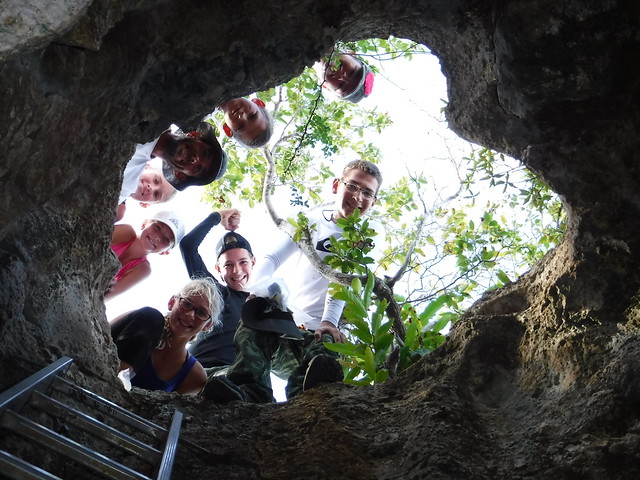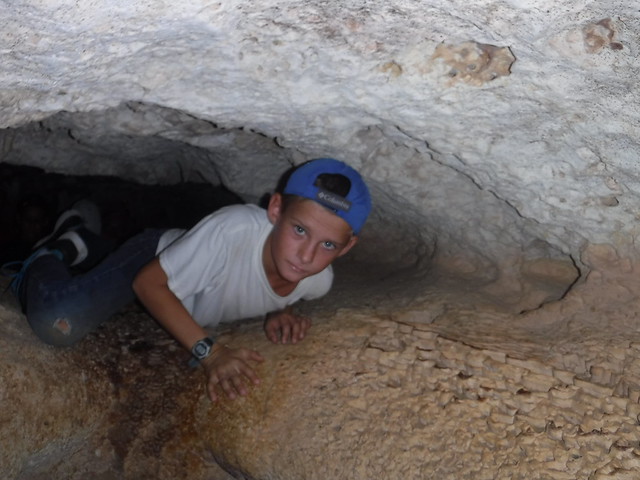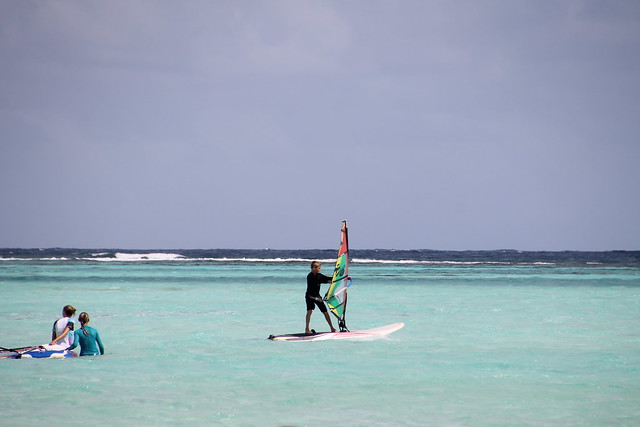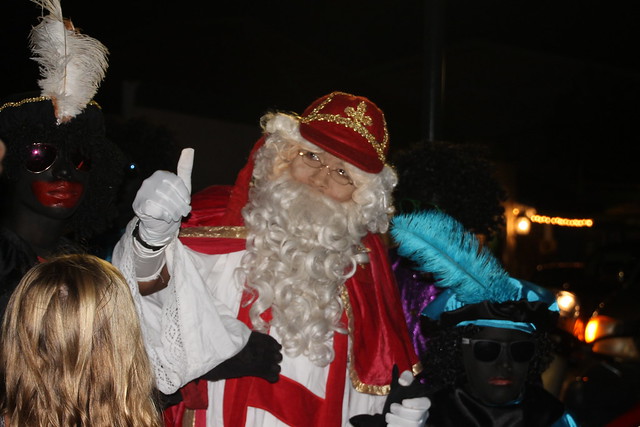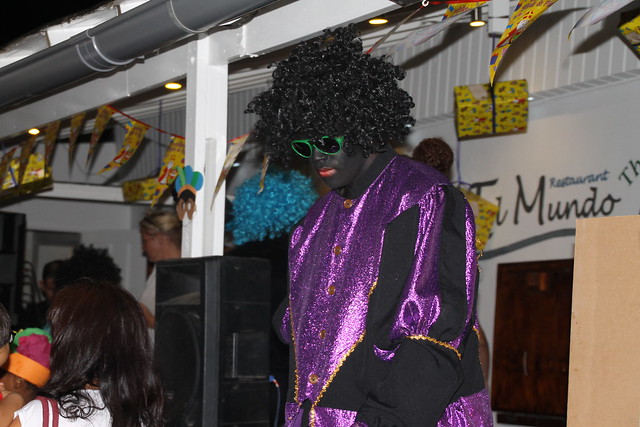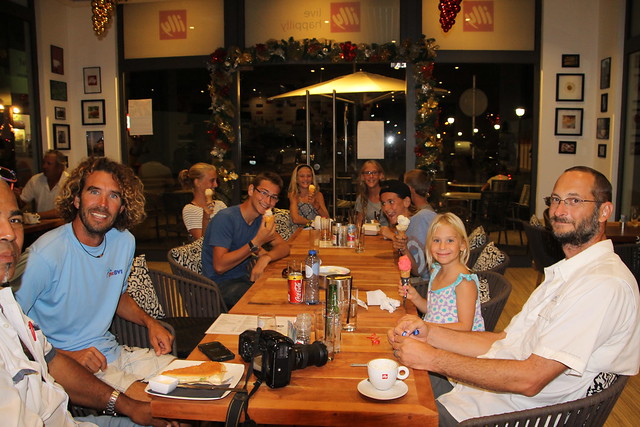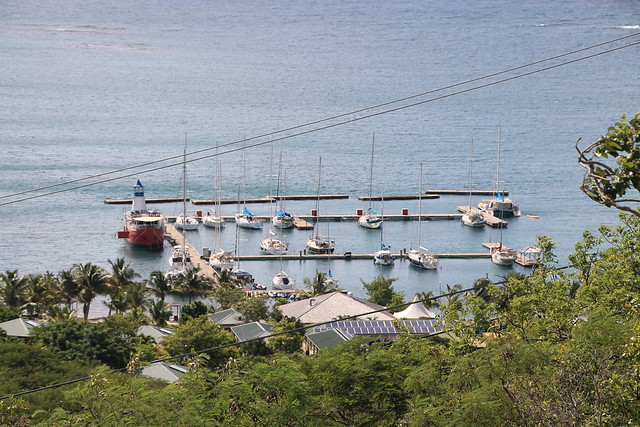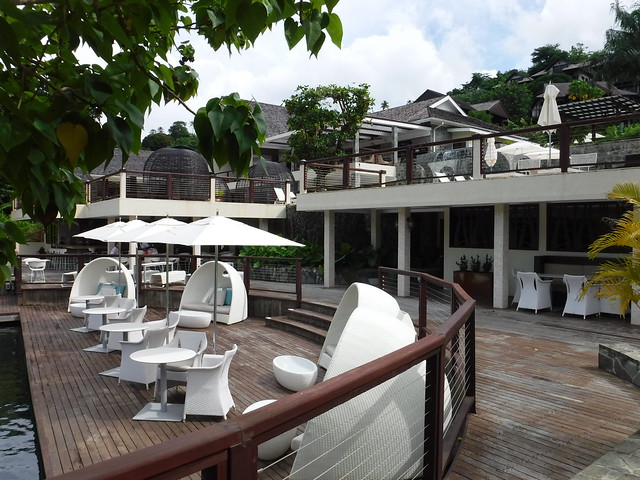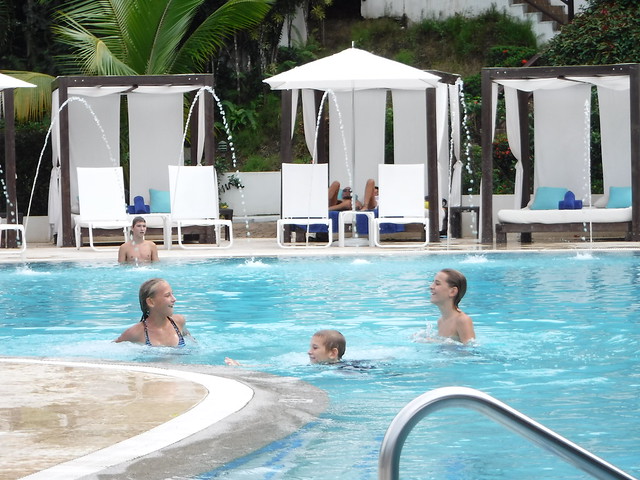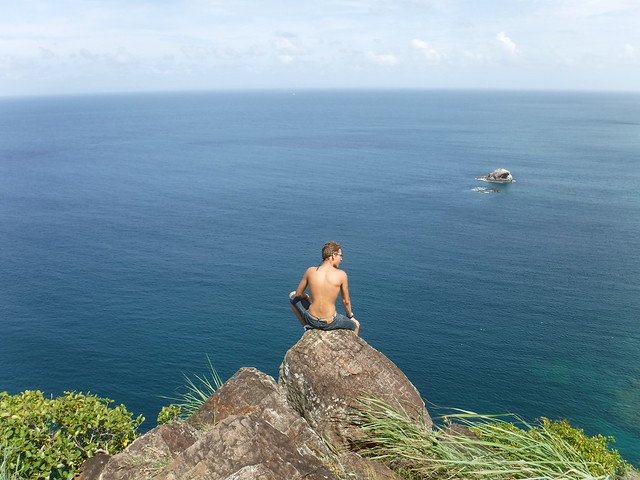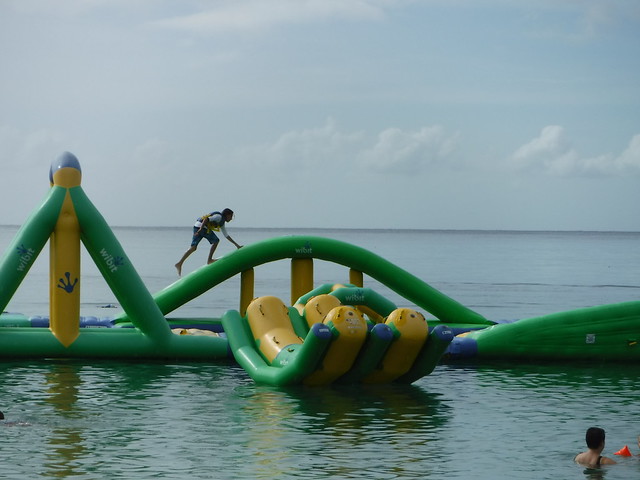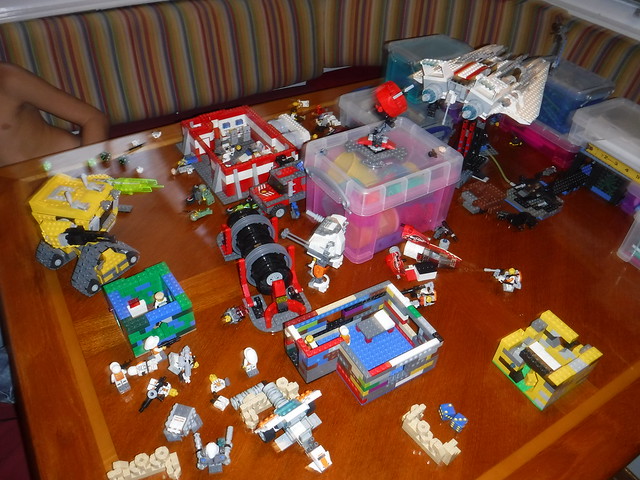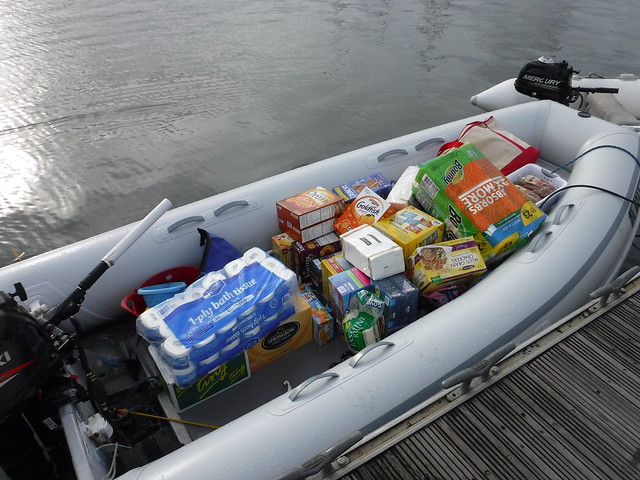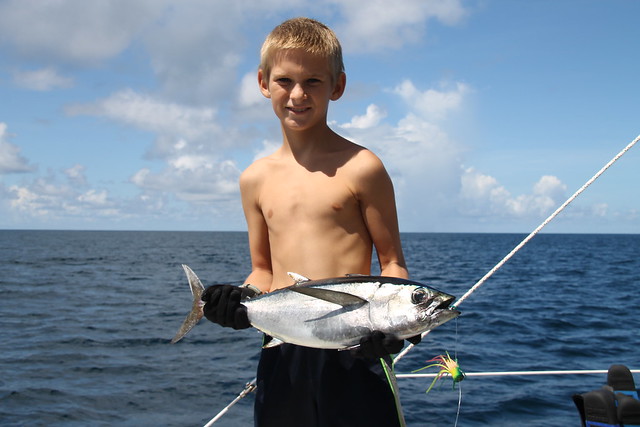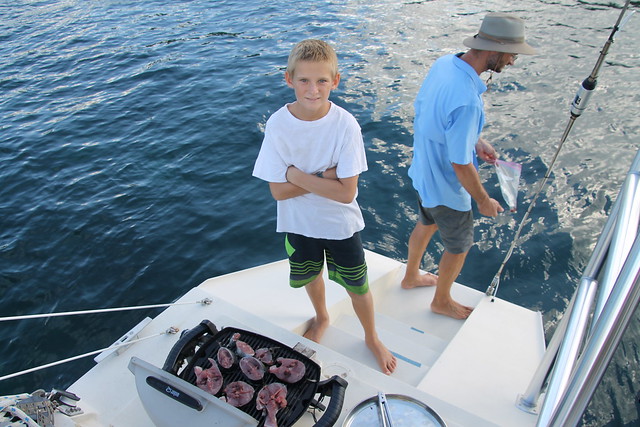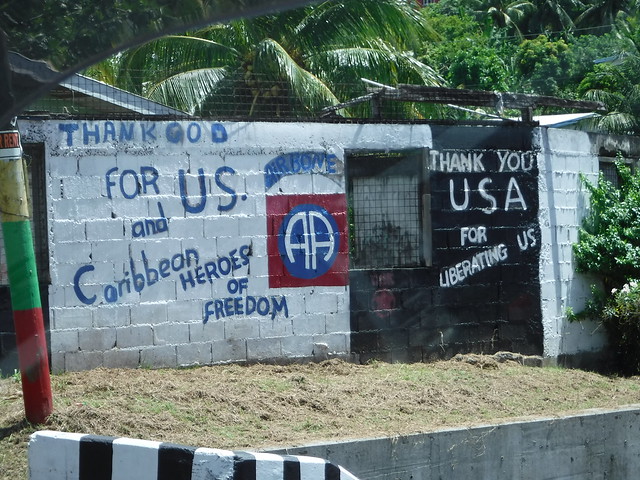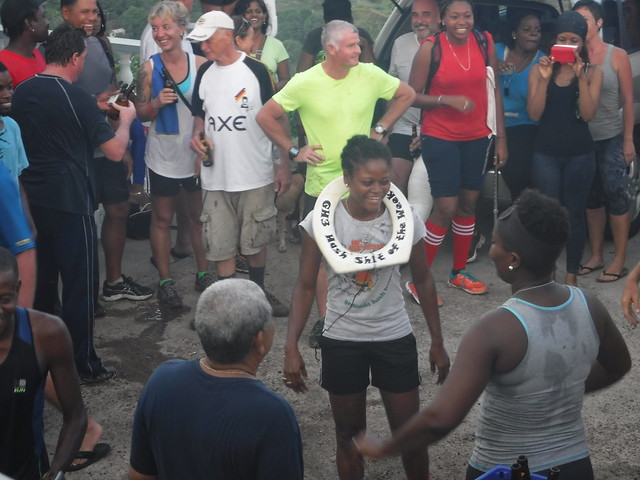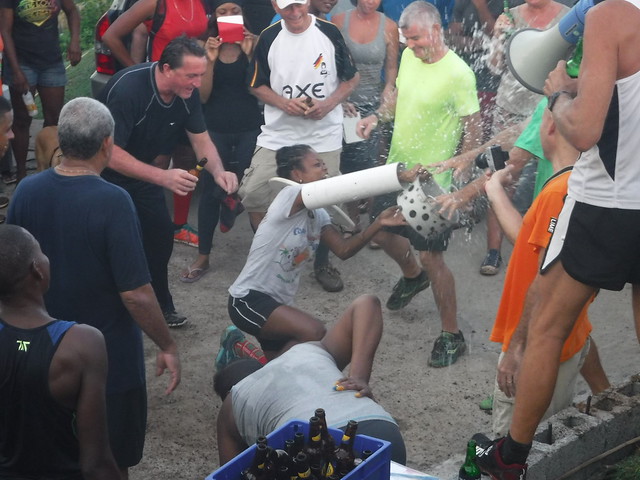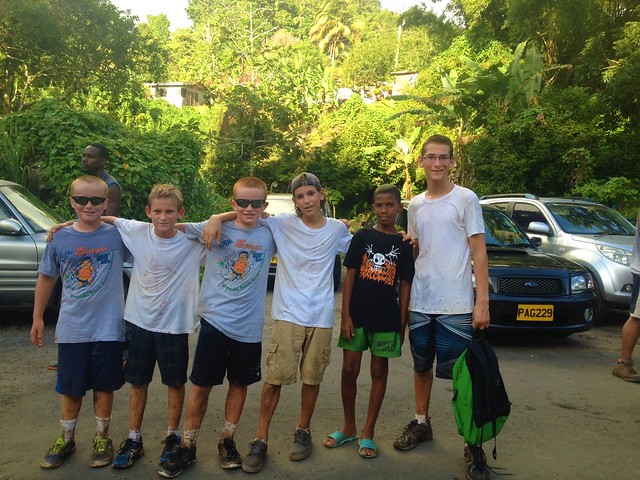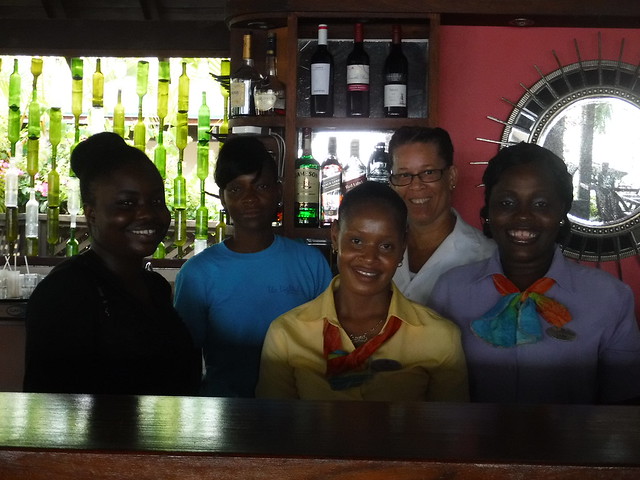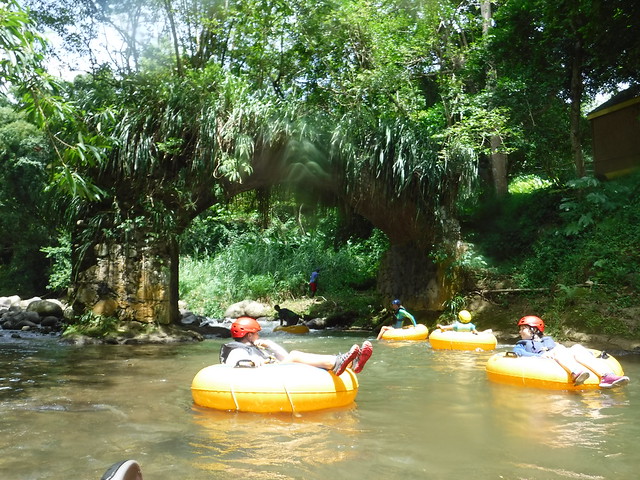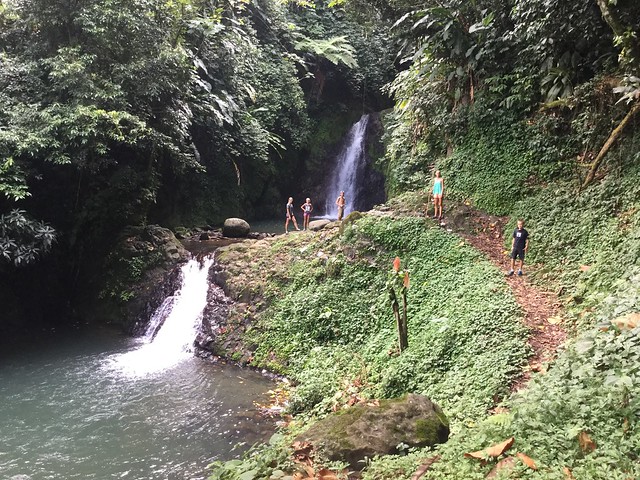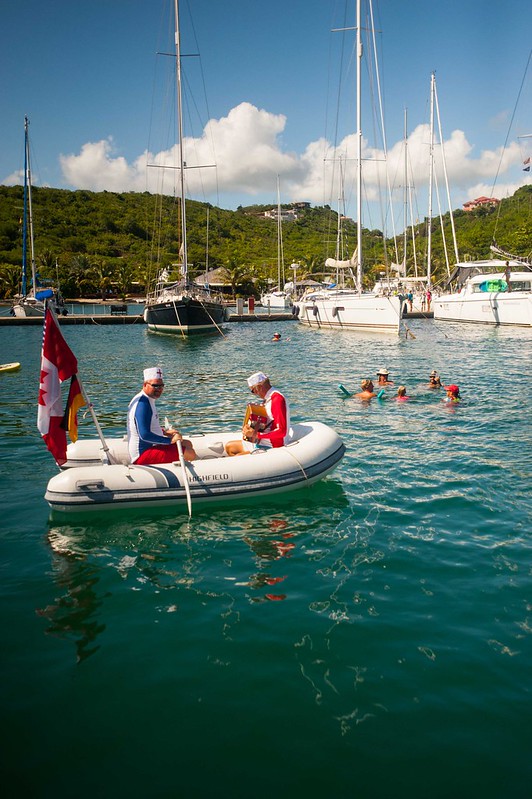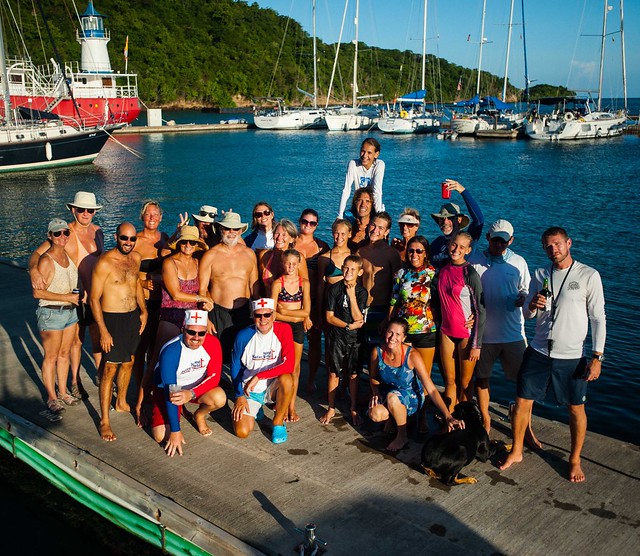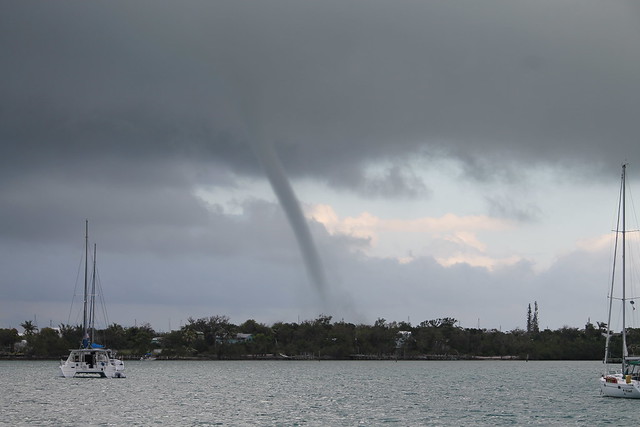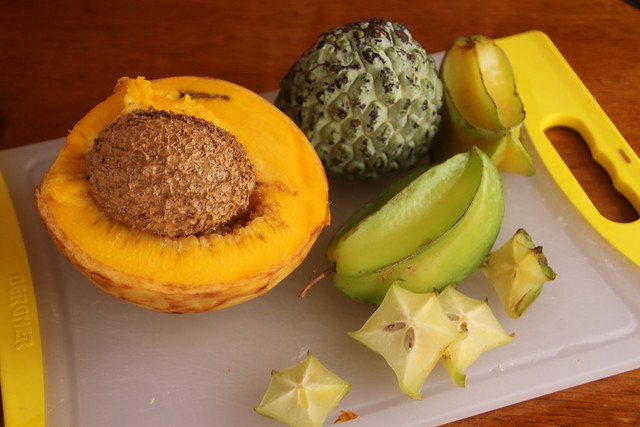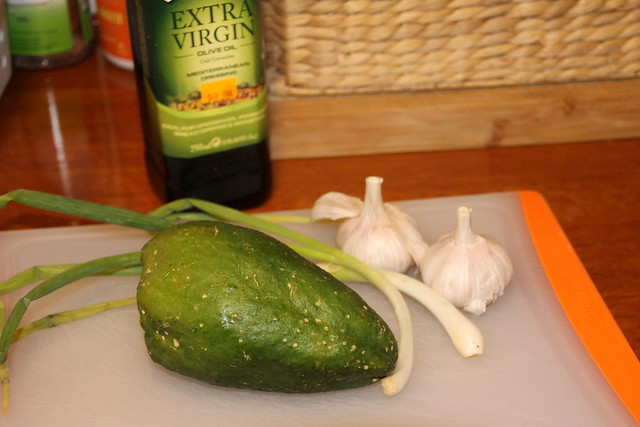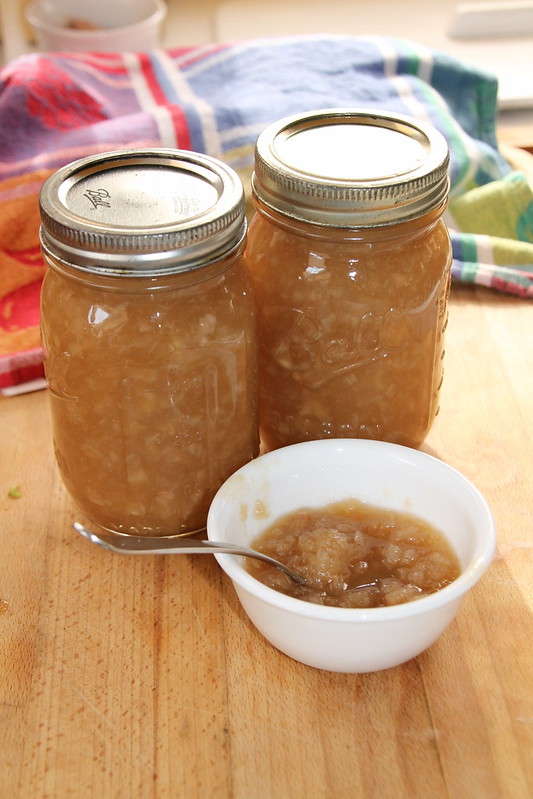I stare with mixed wonder and horror as Rudy, with his gap-toothed smile, explains what it’s like to stand on a whale. Stand on a whale. We are up on a hill in Bequia overlooking Friendship Bay and the Semples Cay whaling station. Rudy, a Bequian taxi driver, has grown up participating in the annual hunt for humpback whales. He is explaining the use of the tools on display at the Maritime Museum, a euphemistic title for a little open-air building with a wrap-around porch and lattice-work grill so you can see the artifacts and old boats, which are propped on whale-bone stands. I am nodding and making mental notes as if I am reporting for the local paper, a curious but unbiased listener.

They’ve been hunting and killing humpback whales in this little island in St. Vincent and the Grenadines since 1875, when “Old Bill” Wallace, a Bequian of Scottish descent who had worked on North American whaling ships, returned to his plantation to train workers and open a commercial whaling station. More than 140 years later, the island is still granted a quota of 4 whales annually by the International Whaling Commission to be taken between January and April, which they grant to only a few countries who practice Aboriginal Substistence Whaling.
Now, I’ve read Moby Dick and have some concept of what a whale hunt entails historically. The double-ended boat Rudy is showing me now, with its loggerhead and tubs of line looks like a diagram in a notated copy of Melville’s famous work. The tools on the wall, harpoons and spades and lances are at least familiar to me, and I view them as one often views artifacts that have no bearing on one’s own daily life, with nonchalance.
But Rudy’s narrative is not a story out of the far-reaching past. As he begins to explain how the whaleboats separate the female humpback from her calf, how they keep her at the surface long enough to harpoon her, how they go for a “Nantucket sleigh ride” and eventually lance and kill her, sew up her mouth so she won’t fill with seawater and sink, then tow her, and her calf (which they also kill), back for flencing and butchering at Semples Cay, I am stunned into silence. The meat of a whale calf is a delicacy, he tells me. The whales are butchered mainly for food, since the export of whale oil ceased by the1970s. The meat is cooked in large chunks with the blubber, which melts and becomes a deep-fry. He assures me that although they took no whales this year, almost everyone still has some meat from the last hunt in their freezer. He says this with enthusiasm, and explains how the whole island turns out as for a party when a whale is killed, how the bay turns red, and how every part of the whale is used.
I find my tongue again, and ask about modern equipment—are they still using the traditional sail and row-boats, the old iron tools? He says the last harpooner, Athneal Olivierre, died in 2000. (I learn later that he was a descendant of Joseph Olivierre, who partnered with Wallace in the 1870s to open 6 whaling stations in Bequia, all but one of which closed down when whales became scarce in the 1940s.) Although Athneal Olivierre is gone, a new generation of men continues to hunt whales, using a “bomb lance” and “darting gun” which use explosive shells to shock and kill the whale. The traditional boat is still used, but is often towed close to the whale by a power boat, which is also used in the chase and for towing whales back to the station.
I ask how many whales are killed every year. Rudy explains that sometimes a whale is lost in the hunt, if it is injured but not caught, or if it sinks. Some years they take the quota, but in other years, they only get one whale, and this year, none. He says that environmentalists and animal rights activists are having an effect on their hunt. Agencies like Greenpeace, he insists, are disrupting their way of life. He informs me that two tactics are used—financial disincentives (paying whalers not to catch whales), and whale-warning systems which use sound to frighten whales away from hunting areas.
One of the kids asks about sharks stealing the meat. They are plentiful around the whale carcass, Rudy says, and fishermen in small boats catch the gorged sharks easily. Because of the influx of whale meat, the sharks are killed only for their livers, which are supposed to be very good for you. The kids ask Rudy’s 11-year-old grandson, who is riding along with his grandfather today, if he eats whale meat. He replies enthusiastically that it’s good, and tastes like fish. He’s never been on a hunt, but thinks he will go someday. Rudy tells us that the fishermen of St. Vincent also hunt smaller whales, “black fish,” and dolphins, and that the meat is good. All of this I take in, reserving judgement, just trying to understand this island’s culture. I thank Rudy for his time and he takes us back to Port Elizabeth.
The kids head to the dinghy, and I stop back by a street vendor to look at some scrimshaw I saw earlier in the day, but now I know where it came from. I ask who did the carving and the vendor tells me about his cousin, and about the bone on which a tiny humpback whale has been meticulously carved. I find it irresistible, and despite my own cultural bias, I buy the souvenir.
At dinner, we have a family discussion about whale hunting. We’re telling Jay, who was at the boat working while we were on our field trip, what we have learned. I ask the kids what they think about the hunt. Aaron, at 13, does not see anything wrong with the taking of whales for meat; because they have a quota, and use the animal to feed the island, it is no different than our hunting deer or wild boar to eat. It is not as if they are poaching, like elephant hunters, to take only tusks. I consider this statement, and realize that every culture has its own rules about what is sacred—Americans eat millions of hamburgers, but in India this would be considered sacrilege. Americans view their pet dogs almost like children, but there are places where dog is a delicacy. The intelligence of an animal doesn’t seem to carry a lot of weight—pigs and monkeys are intelligent—yet they are on the menu. Maybe this is part of a bigger question: is all meat-eating barbaric? Some have come to the conclusion that it is, and become vegetarians. Those who eat kosher limit their diet to certain domesticated quadrupeds and scaled fish. Others apply their own criteria to decide what is food and what is taboo. I did not intend to open a can of worms, but only to ask if there is something inherently wrong with killing whales for food.
In order to process an answer to this question, I decide to do a little research. I stumble across a 2012 report by the Animal Welfare Institute, which was making recommendations to the International Whaling Commission about the renewal of Bequia’s quota. I discover the other side of Rudy’s story.
The main objections seem to be that Bequians do not meet the requirements for Aboriginal Subsistence Whaling; they are not an indigenous people, they do not have a longstanding historical or cultural tie to whale hunting, nor do whales form the bulk of their diet. Because whaling started out in Bequia as a commercial enterprise, it is difficult to prove that the island is eligible for “subsistence” whaling, especially because some of the meat ends up for sale in fish markets in Kingstown, St. Vincent. Furthermore, though whalers once used traditional boats and harpoons, their use of high-speed powerboats and modern weapons changes the game. They are allowed to take up to four whales per year, but they do not document losses or prove that their killing methods are humane. And despite promises by the government to end the targeting of females accompanying their young and to eventually phase out whaling entirely, Bequia continues to illegally kill females and their calves. The Animal Welfare Institute report states that St. Vincent and the Grenadines regularly fails to report their kills, losses, and killing methods to the appropriate committees of the International Whaling Commission and that when they have provided information, it is often contradictory or false. For years, they refused to provide photographic or written evidence to the Scientific Committee, as they made an effort to determine the impact on whale populations.
According to the Animal Welfare Institute, the International Whaling Commission has failed to enforce its own regulations and should not renew Bequia’s quota, especially because St. Vincent and the Grenadines refuses to regulate the hunt or provide proper documentation. Whalers of Barrouallie, St. Vincent also take orca, pilot whales, and dolphins with little or no oversight. It is estimated that around 300-500 cetaceans are killed annually. Fishermen carry hand harpoons for taking dolphins and small whales when the opportunity arises.
Despite the fact that the taking of 3-4 humpback whales each year does not appear to reduce “stock” and poses no significant threat to the Atlantic humpback whale population at this time (according to St. Vincent and the Grenadines, only 35 whales have been taken in as many years), the taking of females and calves is illegal and inhumane. At the very least, it is irresponsible and shortsighted, typical of what we’ve seen of Caribbean fisheries management. The International Whaling Commission reconvenes in 2018 to decide whether St. Vincent and the Grenadines should continue to receive its quota of 4 humpback whales, and it seems at this time that the apathy of the agency will continue. Whether one concludes that hunting whales is barbaric or not does not change the fact that Bequia’s hunt does not comply with the law.
Where I normally frown upon the vigilante tactics of groups like Greenpeace, I can understand their frustration with the International Whaling Commission and the use of creative strategies to discourage the killing of whales around the world. (Incidentally, I was unable to substantiate Rudy’s specific claims about anti-whaling activism in Bequia.) Another creative solution was reported by the Sierra Club in 2014: Orson “Balaam” Olivierre of Bequia hung up his harpoon and decided to try using his boat for whale-watching tours instead of hunting. This seems like a wise way to line up economics with conservation. Why not change the paradigm and use the humpback whale migration to attract tourists instead of hunters? The entire species has been protected since 1978, and humpback whales, which were once hunted nearly to extinction are recovering as a species. Why should the mere enjoyment of whale meat and cultural pride constitute a justification for the continued hunting of a protected animal?
After reading the Animal Welfare Institute’s report, I found myself second-guessing the purchase of a scrimshaw souvenir. By buying the carving, I am implicitly supporting the killing of whales and perpetuating the practice. On the other hand, boycotting the purchase of whale-bone handcrafts alone will have virtually no impact on whale hunting in Bequia, since the animals are mainly killed for their meat, and the use of bone for carvings or household furnishings (which are common in Bequia) is only secondary. I cannot view the tiny, intricate whale that has joined the collection of keepsakes from our travels without mixed feelings. My wonder is undiminished, but it is tinged with great sadness. This small souvenir shall serve as a reminder to me to think very carefully about a what a casual purchase can represent. Merely refusing to buy scrimshaw will not induce Bequia to stop its whaling practices, but an increased awareness of St. Vincent and the Grenadines’ infractions could put international pressure on the island nation to stop the inhumane killing of these protected creatures.
If you are interested in reading the Animal Welfare Institute’s 2012 report in full, it can be found at: https://www.awionline.org/sites/default/files/uploads/documents/SVGReport072012.pdf

